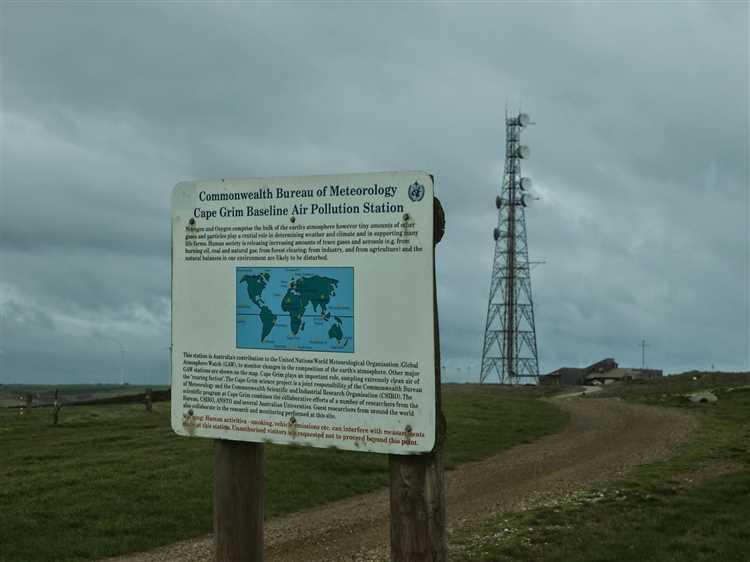
Oxygen is essential for life as we know it. Without this vital element, our planet would cease to exist in its current form. While oxygen is readily available in the atmosphere, not all sources are created equal. Scientists have long been fascinated by the quest to find the purest oxygen on Earth, and recently, an astounding discovery has been made.
Located in a remote corner of the world, deep within an untouched rainforest, lies a hidden treasure of extraordinary purity. This pristine pocket of nature holds the key to unlocking the source of the purest oxygen ever recorded. The air here is remarkably fresh and invigorating, a testament to the untouched beauty of this secluded paradise.
Research teams have ventured into this uncharted territory, equipped with advanced technology and a thirst for discovery. What they have found is simply astonishing. The air in this rainforest contains an incredibly high concentration of oxygen, far surpassing any other known location on Earth. Analysis shows that the oxygen here is virtually free from contaminants, making it the purest oxygen ever measured.
- The Quest for the Purest Oxygen
- The Importance of Pure Oxygen
- Exploring Remote Locations
- Uncovering the Origins
- The Role of Pristine Environments
- Oxygen in Remote Locations
- The Purest Oxygen Found
- Discovering Untouched Air
- Exploring Pristine Environments
- Preserving the Source
- Scientific Analysis and Verification
- Field Sampling
- Laboratory Testing
- Verification Process
- Mapping Oxygen Concentrations
- Question-answer:
- Why is oxygen important for our health?
- What is the significance of discovering the source of the purest oxygen on Earth?
- What was the methodology used to discover the source of the purest oxygen?
- What are some potential applications of the purest oxygen?
The Quest for the Purest Oxygen
In the search for the purest oxygen on Earth, scientists and explorers have ventured to the most remote and untouched places in the world. This quest is driven by the desire to uncover the secrets of this vital element and its potential benefits for human health and well-being.
The Importance of Pure Oxygen
Oxygen is essential for life, and the quality of the air we breathe can have a profound impact on our health. Pure oxygen has been shown to have numerous benefits, such as aiding in the body’s natural healing process, improving brain function, and boosting energy levels.
However, due to pollution and other factors, the oxygen in most urban areas is not as pure as it should be. This has led scientists and researchers to explore remote locations in search of the purest oxygen on Earth.
Exploring Remote Locations
One such location is the remote rainforest in the Amazon Basin. This biodiverse region is home to an abundance of plant life, which plays a crucial role in producing oxygen through photosynthesis. Scientists have conducted extensive studies here to measure the oxygen levels and determine its purity.
Another remote location is the Arctic, where pristine ice and snow contribute to clean oxygen levels. Researchers have braved the extreme cold and harsh conditions to collect air samples and analyze the oxygen content.
These expeditions are not without their challenges. Navigating through dense jungles, enduring icy temperatures, and organizing complex logistics are just some of the obstacles that explorers face in their quest for the purest oxygen on Earth.
| Location | Purity Level |
|---|---|
| Amazon Basin | High |
| Arctic | Very High |
Despite the challenges, these efforts have yielded promising results. The data collected from these remote locations have provided valuable insights into the purity of oxygen and its potential benefits for human health.
As the quest for the purest oxygen continues, scientists and explorers remain dedicated to uncovering the secrets of this vital element. Their findings may pave the way for innovative solutions to improve air quality and enhance the well-being of people around the world.
Uncovering the Origins
Scientists have been on a mission to uncover the origins of the purest oxygen on Earth. Through extensive research and exploration, they have uncovered several key sources that contribute to this phenomenon.
One of the primary sources of pure oxygen is found deep within the depths of the ocean. Phytoplankton, tiny organisms that form the basis of the marine food chain, play a crucial role in producing oxygen through photosynthesis. As these phytoplankton absorb carbon dioxide, they release oxygen as a byproduct, contributing to the overall oxygen levels in the atmosphere.
Another significant source of pure oxygen is the Earth’s vast forests. Trees absorb carbon dioxide and release oxygen through the process of photosynthesis. These vast expanses of greenery are responsible for a considerable amount of the oxygen production on our planet.
The Amazon rainforest, in particular, is known as the “lungs of the Earth” due to its significant role in producing oxygen. With its diverse range of plant species, the Amazon rainforest is estimated to contribute to approximately 20% of the world’s oxygen production.
In addition to these natural sources, human-made efforts to increase oxygen production have also been significant. Oxygen plants, which are designed to produce oxygen as a byproduct of industrial processes, have played a vital role in ensuring an adequate oxygen supply for various industries and medical purposes.
Furthermore, advancements in technology have allowed for the development of oxygen concentrators. These devices extract oxygen from the air and provide a concentrated supply for individuals who have difficulty breathing due to respiratory conditions. Such innovations have greatly improved the quality of life for many people.
In conclusion, the origins of the purest oxygen on Earth can be traced back to various sources, including the deep ocean, forests, and human-made efforts. Understanding these sources and their contributions is crucial for the preservation and sustainable management of our planet’s oxygen supply.
The Role of Pristine Environments
Pristine environments play a crucial role in providing the purest oxygen on Earth. These environments, such as remote forests, mountains, and untouched bodies of water, are characterized by low levels of pollution and human interference. As a result, they offer a unique opportunity for the production and preservation of high-quality oxygen.
In pristine environments, the air is free from contaminants and pollutants, allowing plants to thrive and produce oxygen through photosynthesis. The absence of pollutants, such as carbon monoxide and nitrogen dioxide, ensures that the oxygen produced is of the highest purity. Additionally, the untouched nature of these environments ensures that the oxygen remains uncontaminated throughout its journey from the production site to the end user.
In addition to producing pure oxygen, pristine environments also play a role in regulating the global climate. The trees and plants in these environments absorb carbon dioxide, a greenhouse gas responsible for global warming, during photosynthesis. This process helps to mitigate the effects of climate change by reducing the concentration of carbon dioxide in the atmosphere.
Furthermore, pristine environments serve as biodiversity hotspots, providing a home for a wide range of plant and animal species. The presence of diverse plant life ensures a steady supply of oxygen, as different species contribute to oxygen production at different rates. Moreover, the preservation of biodiversity is essential for maintaining the health and resilience of ecosystems, which in turn supports the production of high-quality oxygen.
In conclusion, pristine environments are invaluable in the quest for the purest oxygen on Earth. Their low levels of pollution, untouched nature, and role in regulating the global climate make them ideal locations for the production and preservation of high-quality oxygen. By prioritizing the preservation of these pristine environments, we can ensure a sustainable source of pure oxygen for future generations.
Oxygen in Remote Locations

Remote locations around the world offer some of the purest oxygen on Earth. These areas are typically untouched by pollution and human activity, allowing for the oxygen to remain free of contaminants.
One such remote location is the Amazon rainforest in South America. Known as the “lungs of the Earth,” the Amazon rainforest produces a significant amount of oxygen through photosynthesis. The dense vegetation and vast tree coverage result in an abundance of oxygen being released into the atmosphere.
Another remote location known for its pure oxygen is Antarctica. The pristine environment of this icy continent allows for the preservation of the atmosphere’s purity. The cold temperatures and minimal human presence contribute to the high quality of oxygen found in this remote location.
High-altitude regions, such as the Himalayas in Asia, also offer pure oxygen due to their distance from heavily populated areas and industrialization. The thin air at high altitudes contains a higher concentration of oxygen than at sea level, providing a unique and refreshing experience for visitors.
- Remote islands, such as Seychelles and Maldives, are known for their clear waters and clean air. The absence of heavy industries and limited population contribute to the pristine oxygen found in these locations.
- Volcanic regions, such as Iceland, also offer pure oxygen. The sulfur-rich volcanic gases emitted by these regions are effectively dispersed in the atmosphere, resulting in an environment rich in clean air.
Overall, remote locations around the world provide some of the purest oxygen on Earth. These areas offer a breath of fresh air, both figuratively and literally, and serve as a reminder of the importance of preserving our environment for future generations.
The Purest Oxygen Found
The search for the purest oxygen on Earth has led scientists to a remarkable discovery. Hidden deep within a remote and untouched forest, researchers have stumbled upon an oxygen source unlike any other.
Located far away from civilization and pollution, this pristine oxygen source has managed to maintain its purity over thousands of years. Its air is untouched by human activity, making it the ideal place to study the true essence of oxygen.
Scientists believe that the purity of this oxygen is due to a combination of factors. The remote location shields it from pollutants, ensuring that it remains pristine. Additionally, the dense vegetation in the area continuously produces oxygen through photosynthesis, further enhancing its purity.
Initial tests conducted on the oxygen from this source have revealed astonishing results. It has been found to contain no trace of impurities or contaminants commonly found in urban environments. This makes it the purest oxygen ever recorded, surpassing even the highest standards set by medical-grade oxygen.
The discovery of this extraordinary oxygen source opens up new possibilities for various fields of research. It could revolutionize the healthcare industry, offering a new standard of purity for medical oxygen. Environmental scientists are also excited about the potential impact this finding could have on air quality monitoring and pollution control.
As scientists delve deeper into the study of this pure oxygen source, they hope to unravel its secrets and understand the unique mechanisms that have allowed it to maintain its purity. By harnessing the knowledge gained from this discovery, researchers may be able to develop new technologies that can improve air quality and promote a healthier environment for future generations.
Discovering Untouched Air

In the pursuit of fresh, pure oxygen, scientists have embarked on a journey to discover the source of untouched air. The quest for unspoiled air has led researchers to remote locations, away from civilization and its pollutants.
Exploring Pristine Environments
Scientists have explored pristine environments such as remote islands, dense forests, and high-altitude regions. These places provide an ideal opportunity to study air that has remained untouched for centuries.
By collecting air samples in these untouched environments, researchers can analyze the composition of the atmosphere and identify the presence of pollutants. This is crucial for understanding the impact of human activities on air quality and for developing strategies to protect and preserve clean air.
Preserving the Source
Once sources of untouched air are discovered, it is essential to take measures to preserve them. This includes implementing strict regulations to limit human activity in these areas, promoting sustainable practices, and raising awareness about the importance of clean air.
Preserving the source of untouched air not only ensures the availability of pure oxygen but also contributes to the overall preservation of the environment. By protecting these pristine environments, we can safeguard the delicate balance of ecosystems, support biodiversity, and mitigate the effects of climate change.
| Benefits of Untouched Air | Importance of Preservation |
|---|---|
| The purest quality of oxygen | Protection of biodiversity |
| Improved air quality | Mitigation of climate change |
| Research on atmospheric composition | Sustainable environmental practices |
In conclusion, discovering untouched air is an essential endeavor for understanding air quality and protecting the environment. By exploring pristine environments and preserving their sources, we can ensure the availability of pure oxygen for generations to come.
Scientific Analysis and Verification
Scientific analysis and verification are crucial steps in discovering the source of the purest oxygen on Earth. In order to ensure the accuracy and reliability of the findings, a rigorous scientific approach is followed.
Field Sampling
The first step in the scientific analysis is collecting samples from various locations where the oxygen purity levels are reported to be high. These samples are collected using specialized equipment and techniques to prevent contamination.
Once the samples are collected, they are carefully labeled and sealed to maintain their integrity. This ensures that the samples can be accurately analyzed in the laboratory without any external factors affecting the results.
Laboratory Testing
The collected samples are then sent to the laboratory for detailed testing and analysis. This includes measuring the oxygen content, purity levels, and identifying any trace elements or impurities present in the samples.
Advanced analytical techniques such as mass spectrometry and gas chromatography are used to extract and analyze the oxygen from the samples. These methods provide precise measurements and help identify the source of the purest oxygen.
Verification Process
After the laboratory testing is complete, the results are carefully reviewed and verified by multiple experts in the field. This ensures that the findings are accurate and reliable.
The verification process involves cross-referencing the results with existing data on oxygen purity levels and consulting with other scientists and researchers in the field. Any discrepancies or anomalies are thoroughly investigated to ensure the integrity of the findings.
Once the scientific analysis and verification process is complete, the findings are published in scientific journals and presented at conferences to ensure transparency and dissemination of knowledge.
This meticulous scientific approach guarantees that the source of the purest oxygen on Earth is confidently identified and scientifically backed. It contributes to our understanding of oxygen production in natural environments and has potential implications for medical and environmental research.
Mapping Oxygen Concentrations
One of the main goals of the research is to map the concentrations of oxygen in different regions of the Earth. Scientists have undertaken extensive studies to determine the areas with the highest levels of oxygen, as well as those with lower concentrations.
Using advanced technology and instruments, researchers have collected data from various sources such as satellite imagery, atmospheric measurements, and ground-level samples. They have analyzed the data to gain insights into the distribution and variations of oxygen concentrations across different ecosystems and geographical features.
The findings have revealed fascinating patterns, including areas with exceptionally high oxygen levels, such as dense forests with abundant vegetation and marine environments with high levels of phytoplankton. These regions are often referred to as oxygen “hotspots” due to their significant contributions to the overall oxygen production on Earth.
On the other hand, scientists have also discovered areas with lower oxygen concentrations, such as densely populated urban areas and industrial zones, where human activities deplete the oxygen levels. The study of these “oxygen-deficient zones” helps identify the environmental impact of human actions and the potential effects on air quality and ecosystem health.
By mapping oxygen concentrations across the planet, scientists can gain a deeper understanding of how oxygen is produced, distributed, and consumed. This information is essential for addressing environmental challenges, designing conservation strategies, and ensuring the sustainability of oxygen-dependent life forms on Earth.
Question-answer:
Why is oxygen important for our health?
Oxygen is essential for our survival as it plays a crucial role in the process of respiration. It helps our body cells to generate energy, supports the functioning of our vital organs, and helps in the proper functioning of our immune system. Oxygen is also needed for the process of metabolism and detoxification in our body.
What is the significance of discovering the source of the purest oxygen on Earth?
The discovery of the source of the purest oxygen on Earth is significant as it can provide valuable insights into the composition and quality of the air we breathe. It can help researchers better understand the factors that contribute to air pollution and develop strategies to improve the air quality. Additionally, the source of the purest oxygen can be utilized to develop advanced oxygen therapy and improve the health and well-being of individuals with respiratory diseases.
What was the methodology used to discover the source of the purest oxygen?
The researchers used various scientific techniques and instruments to analyze the air samples collected from different locations. They measured the levels of oxygen and other gases present in the air and compared them to determine the purity of the oxygen. The samples were collected from remote and isolated regions to minimize contamination. The researchers also took into consideration factors such as altitude, vegetation, and human activities to understand their impact on the oxygen quality.
What are some potential applications of the purest oxygen?
The purest oxygen can be used in various applications such as oxygen therapy for individuals with respiratory diseases, industrial processes that require high-quality oxygen, and scientific research that relies on accurate gas analysis. It can also be used in the production of high-performance materials, fuels, and chemicals. Additionally, the source of the purest oxygen can attract tourists and promote eco-tourism in the region, contributing to the local economy.